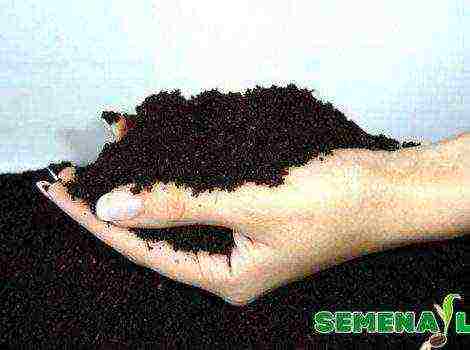Content
Plant type: biennial or annual
Attitude to light: shade-tolerant, light-loving
Relation to moisture: prefers moderate hydration
Wintering: does not winter in the middle lane
The soil: prefers garden soils
Flowering time: summer (July-August)
Height: high (above 100 cm)
Cultural value: decorative deciduous
Atriplex Quinoa, atriplex. A large annual plant with purple-red stems and leaves.
Types and varieties of quinoa
Only one annual species is grown - the garden atriplex (Atriplex hortensis), which is often called the "Finnish swan". Initially, it was cultivated as a gourmet vegetable crop. Its fresh leaves are prepared like spinach, while dried leaves are added to teas.
Garden atriplex or garden quinoa (Atriplex hortensis)
Atritex reaches a height of 150-200 cm. Plants are slender, not very branchy, compact. The flowers are small, inconspicuous.
Blooms in mid-July and blooms until mid-September.
Several decorative varieties are known that are most often used as a background for other species:
'Crimson Plume' - purple flowers, red leaves;
‘Gold Plume’ - yellow flowers and leaves;
'Red Plume' - flowers and leaves are red
Swan care
It does not need special care: it is unpretentious, it is not demanding for soils, it is photophilous, but it can grow in partial shade, it is thermophilic.
Quinoa plants can be sheared to form dense walls.
Reproduction of quinoa
Seeds in a permanent place in nests of 2-3 seeds at a distance of 25-30 cm. The sowing time is chosen so that the seedlings are not damaged by frost, usually at the end of May. Seeds sprout amicably, after 6-8 days.
This spectacular silvery shrub is often used as a hedge, ideal for marine climates, and excellent protection from wind and sea spray.
To form a dense hedge from atriplex, you will have to actively work with a pruner and brush cutter in March - if the plant is not cut, it easily forms voids at the base and in the center of the bush.
- Height: 1.5 to 2 m
- Width: 2 to 3 m
- Foliage classification: evergreen shrub
- Optimal location: in the sun
- Frost resistance: extremely thermophilic, does not withstand temperature drops below -5 ° С
- Soil: sandy, dry, neutral
- Growing method: in hedges, in groups, in containers
- Pruning Period: Spring (March)
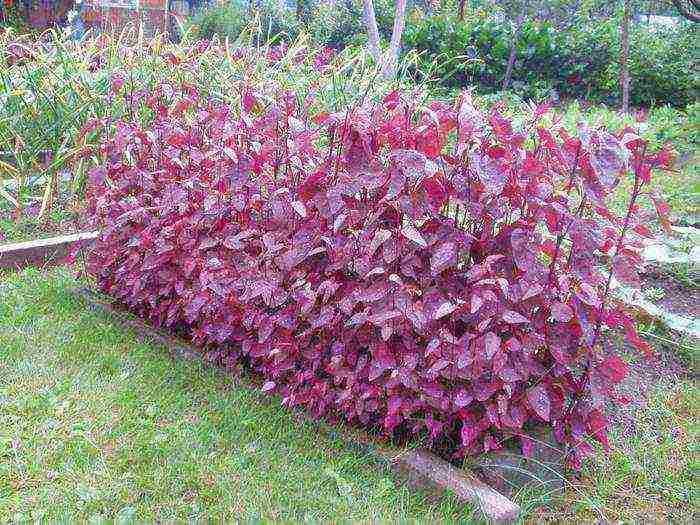
Landing
In the fall or at the very beginning of spring, prepare a planting hole 80 x 80 cm. For a hedge, dig a trench with the same parameters of depth, width and required length. Plant the bushes 60-80 cm apart. Water the plants abundantly after planting.
Pruning
Formative pruning
The hedge should be trimmed every season to maintain a constant height. The point of pruning is to keep the bushes dense and compact, and their "legs" are not exposed. Stimulating pruning allows you to actively grow young shoots that make the hedge thicker.
Sanitary pruning
Continue to maintain the height and width of the hedge along its entire length. Remove old and dry shoots at the root, thereby making way for the young.
Reproduction
Propagation by cuttings
The optimal time for propagation by cuttings is April or May. The top cuttings should be about 10 cm long, remove the lower leaves, keeping the upper ones, and place the cuttings in a pot filled with wet sand.The pots must be placed in a greenhouse with a regular temperature of at least 18 ° C and high air humidity. As soon as the cutting takes root, it can be transplanted into the school.
Care and agricultural technology
Be sure to add a generous dose of organic humus to the pit when planting. Weeding regularly in early summer will get rid of weeds and aerate the ground. Water in dry and hot weather.
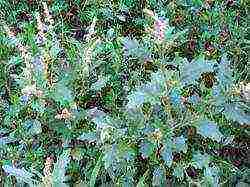 Gone are the days when people had to eat quinoa bread. Today, the plant is used by gardeners to decorate their flower beds and summer cottages.
Gone are the days when people had to eat quinoa bread. Today, the plant is used by gardeners to decorate their flower beds and summer cottages.
Genus quinoa
More than two hundred herbaceous plants, dwarf shrubs and shrubs represent the genus Quinoa (Atriplex).
The stems and leaves of plants are often covered with a white powdery coating, to which, according to one version, they owe their name.
Varieties
• Salt quinoa (Atriplex halimus) is a perennial shrub that grows up to 2.5 meters in height. In the coastal regions, hedges are made from it. The silvery-gray foliage of the saline quinoa resembles shiny porcelain, giving the bush the appearance of a porcelain decorative sculpture. Quinoa roots well absorb salt from the soil, thereby cultivating the soil.
• Garden quinoa (Atriplex hortensis) is a herbaceous annual whose leaves are used by people for food, adding young foliage to salads. The bush growing up to two meters is covered with green leaves. There are varieties with reddish leaves, for example, garden red quinoa. Variety "Orach Red" is distinguished by leaves, which have a purple reverse side. And the variety "Red feather" has ovoid-rounded small fruits of a reddish color.
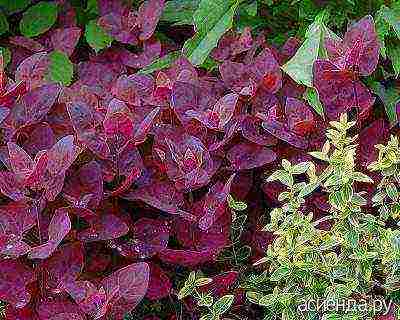
•
Lenticular quinoa
(Atriplex lentiformis) is a perennial shrub that grows up to three meters in height. Its erect stem with spreading shoots is covered with silvery leaves, the shape of which can vary from oblong to ovoid. Quinoa lenticular is a dioecious plant, that is, in order to grow your own seeds, you need to have two bushes: female and male.
Growing
 They make hedges from quinoa, planting bushes at a distance of 40 cm from each other, and also grow it in single and group plantings. Quinoa is a thermophilic plant, and therefore it is more comfortable for it to grow in mild climates. But it is also grown in more northern regions, cutting off the aerial part of the plant damaged by winter frosts under the root in early spring. The roots overwintered in the soil release new shoots, continuing the life of the perennial quinoa.
They make hedges from quinoa, planting bushes at a distance of 40 cm from each other, and also grow it in single and group plantings. Quinoa is a thermophilic plant, and therefore it is more comfortable for it to grow in mild climates. But it is also grown in more northern regions, cutting off the aerial part of the plant damaged by winter frosts under the root in early spring. The roots overwintered in the soil release new shoots, continuing the life of the perennial quinoa.
Swan is planted in open ground in colder areas in spring, and in warmer climates in autumn. The quinoa loves loose soil. Salt quinoa can grow on saline soil, being its healer, cleansing the soil from salt contamination. By accumulating absorbed salts in its leaves, quinoa turns into a natural fertilizer. The leaves are dried and used as nitrogen fertilizer, grinding them into powder and fertilizing the soil for plants that need nitrogen.
At the beginning of the growing season, ornamental quinoa is fed with complex fertilizer at the rate of 30 grams per 1 square meter. For the garden quinoa, the leaves of which are eaten, organic feeding is also needed. For example, fertilizing with manure per 1 square meter of land requires 4-5 kilograms of manure.
The landing site for the quinoa is sunny. The plant is resistant to high temperatures, but from frost, as already noted, the aboveground part dies off, but there are living roots that resume vegetation in the spring.
The swan needs regular watering in the spring and summer, especially during prolonged drought.
Maintaining appearance
To maintain the appearance of the plant, it is necessary to promptly remove heavily damaged and dried shoots.
Reproduction
Quinoa can be propagated by seeds, cuttings from shoots, shoots.
Reproduction by sowing seeds is rarely used. More often, at the end of spring, cuttings from shoots are cut and planted in clean sand or light sandy loam soil.Until roots are formed on the cuttings, the soil is kept moist. Cuttings with roots are planted in open ground in a chosen place.
If the plant develops shoots with their own roots, they are separated from the mother plant and planted in a permanent place.
Enemies of the swan
Subject to the rules of growing quinoa, it rarely succumbs to diseases and pests. But when growing a plant on heavy soil or when there is an excess of moisture in the soil, the roots of the plant rot.
The next enemy is frost, which damages the above-ground part of the plant, and in case of snowless, severe frosts, the roots can also freeze out.
Garden atriplex (garden quinoa) Red feather, 0.2 g (Expiry date: 01.10.2018)
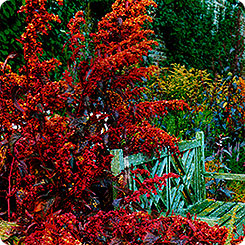
Brand: Russia Gardens
Price:
24 R29 R
Sowing seedlings
Transfer to the ground
Landing in the ground
Bloom
An extremely exquisite and attractive plant despite the gigantic size of this "feather". Bright purple-red color and graceful graceful forms are attractive all season, even seedlings with emerging red-coral and burgundy leaves involuntarily attract attention. A vigorous plant, amenable to shearing and shaping. Heat-loving. Sowing dates are chosen so that the seedlings do not fall under return frosts.


